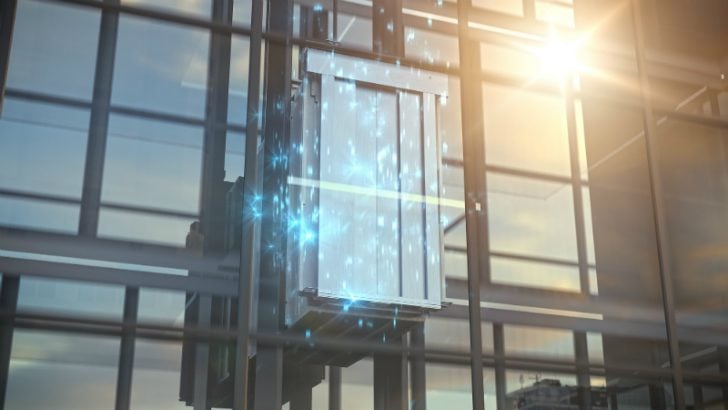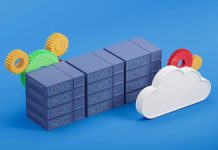

We caught up with William Nerhing, CEO of ThyssenKrupp Elevator UK. The company is part of the larger ThyssenKrupp industrial conglomerate. ThyssenKrupp Elevator UK offers market leading passenger movement systems in both horizontal and vertical directions. Nerhing was in Dublin to talk on an Internet of Things (IoT) panel. He was speaking about how ThyssenKrupp Elevators UK are engaging with IoT.
Nehring initially spoke about the work they are doing with the IoT.
“We have introduced the Max system in partnership with Microsoft. It collects data from the equipment not the end user. When we come on site we already know if a component is failing, so you can bring the spare part and reduce maintenance time.
“The big game changer is the second phase of the Max system. We are sending all this data to the Microsoft Azure cloud. With an enormous amount of data we have the ability to analyse it. This is where big data and machine learning comes in play. You simply did not have this ability in the past. Combining this with a really good algorithm enables us, in the future, to predict maintenance so that we know when a component is going to fail before it actually happens.”
“We can therefore offer our clients a service that is reduces the downtime of elevators and makes the transportation in buildings as accessible as possible. As an end user you never have to wait for a lift and you don’t see the see the sign anymore saying ‘lift out of order’. That is a big game changer in the industry. This is quite exciting for us.”
ET: What are the key challenges that you face implementing IoT
“One of the key challenges with IoT is that a lot of people don’t know what it means. Everyone thinks there is an opportunity, there is something coming, but they cannot grasp what it means. We are not talking about Internet startups, we are talking about big industrial companies,who are sometimes very traditional. When we talk about IoT it comes back to typical management problems. When we talk about cultural changes and internal barriers in an industry, they are very reluctant to change. That is the key topic we need to address in the industry.”
ET: How did you assess the commercially viability of your IOT solutions? Was there one you rejected?
“It was long fight internally. As with every business idea you have to come up with a very, very solid model, especially when you talk about IoT. We started quite early and in our industry we were the first movers. That goes along with the fact that we wanted to drive the industry but for us there was even more uncertainty. When we jumped on the IoT train a lot of people weren’t aware of it at all. We had a lot of discussions internally and one or two rejections along the way. “
“In the end you don’t just want to do an IoT thing, you want to do something that benefits the customer the most”
ET: What about security in IoT?
“Let’s face it, security is the most important thing. If that is not in place you can forget everything else. For us we are not talking about personal data, which is much more critical, but we do talk about important data. Building information and movement patterns are the key to our value creation. Therefore we have to ensure that we work with the best partners out there to ensure the best possible security. As a service industry you never ever want to lose trust and if you have a data leak that is harming your client you will lose that trust immediately. You want to make sure that everything is in place to protect that data”
ET : So what about personalising the experience for the end user?
“You can have targeted advertising on top of what you are offering. For example, you come into a building and the elevator knows that you always go to floor 11, or that at 1 pm you go to the cafeteria. The big change for the industry is the efficiency part. You can reduce the downtime of an elevator dramatically because of the algorithm, the data collection and the value you get out of it. Well we wouldn’t have thought about it a couple of years ago.”
ET : Who is your inspiration and why?
“When I look for inspiration I try to look outside business life. I would choose a Greek artist, Apostolos Palavrakis. He is doing very inspiring art and he is a person that brings me back to what is really important in life and I find that really important in business as well.”
ET: How would you describe your leadership style?
“Participative would be the best word to describe it. I believe in flat hierarchies and strong teams and being approachable. It is not super dominant nor is it a military leadership style.”
ET: What are your personal challenges for the next 12 months
“Personally it would be to get some sleep. I have young kids, so it is still the children. Businesswise we have a very challenging growth plan and plans to move our technology forward.”
ET: What is your darkest (business) day and how did you overcome it.
“We are a service industry so we depend very much on the client being happy. The truth is that every day that the client is unhappy is a very dark day for us. The only way to overcome that is communication, communication, communication. That means sometimes you also have to communicate that you do not have a solution and you are not where you want to be. It is never a nice call to make to a client but it is better than not calling him.”
ET: What was your proudest moment?
“The best thing in the job is seeing your teams fully aligned, that they enjoy what they are doing and you see them going that extra mile. I am doing a lot of roadshows in the UK, with all my team from senior management down to shop floor service engineer. You see their commitment and their motivation and that is one of the biggest joys for you as a CEO.”
ET: Can you share a tip for new CEO’s
“The most important thing is to listen to your people. Sometimes we in senior management forget that listening to your people can give you so much insight and advice. Also be authentic to yourself. Never forget that you are dealing with human beings and they are very sensible. They can see if the story you are telling them is one you don’t believe in.”
ET: What was the latest Business book you read, your favourite book and/or podcast?
“The Powers To Lead by Joseph S. Nye Jr. It was quite interesting with a different leadership style.”
ET: What business software does your company use?
“The one thing is the predictive maintenance MAX system that I touched on earlier. In terms of future applications, HoloLens which we are introducing in partnership with Microsoft. Our business is lift maintenance. The big change is mixing reality with augmented reality and that is fascinating. It is a bit like the movie with Tom Cruise, The Minority Report. You can be in front of the controller of an elevator and do virtual post-its with notes. You can create a virtual tag, recording a 20 second message of what you have done or the issue with the lift. Then you can have real time conversations with anyone anywhere in the world and they can draw an arrow to where you need to look at. You can draw a huge circle on the floor to warn about a trip hazard for the next engineer.
This is a big game changer for our industry in having that knowledge accessible. In a company like ours we have the knowledge but it is text book knowledge. In the future you could come as an engineer to a service site that you have never seen before in your life. Yet with HoloLens you have all the information you need. Just think about the change and efficiency that we’ll have when you don’t have to start from scratch again and again. “
ET: What about ERP Software
“We are a huge conglomerate with all sort of different businesses. One part is the elevator business, another part is automotive supplies, steel etc. It is quite a huge mix. We use different software systems because we operate in so many different markets with so many different products. We have SAP but we also have a lot of tailor-made software where we need it.”
ET: Which three technologies will influence your industry most in 2017
“The Twin system – Twin is actually a lift system we developed nearly 10 years ago. You have two cabins and one shaft, they can move independently from each other. This was completely new when we introduced it. It is one of the key products for all major projects all around the world. It enables architects to simply have more space available for tenants because you need fewer lift shafts.
“The second is the MAX system – Where we have it, we are collecting the data, sending it to the Azure Cloud. In 2017 we believe we will reach the point where we have collected enough data to enter into the second phase and start to become a predictive maintenance company.
“The third one will be HoloLens – We have just piloted it in the US. We want to do much more in 2017. We want to make a tool that is very accessible for all markets, that we can use everywhere”
ET: What is on the radar in terms of future technology for ThyssenKrupp
“Multi is the so called Willy Wonka elevator that goes sideways. This is amazing. I have been with the company for quite a while. I was with the company when we developed the maglev trains. The train was hovering above the guiderail with linear motors. We have that technology in-house and we managed to put that technology into elevators.
“This year we are going to install the prototype in Germany. You will have a lift without any ropes attached, purely driven by linear motor technology, going up and down in the shaft. That means you can have many lifts in a shaft as it can also go sideways. It is changing everything in our industry. Architects love it because they can design buildings completely differently than they have in the past. It enables so many new opportunities.”
ET: What are the key challenges faced currently by your industry?
“For us it is developing future cities and making sure that people flow is enabled in the future. This movement needs to be done in a positive way. Not spent in stressed time, where you are waiting for things that you cannot influence. We are here to make it more comfortable, we are here to make it a more positive experience to move around in cities especially vertically.”
ET: How do you see the company changing in two years, and how do you see yourself creating that change?
“For our business the technology is absolutely key. We are heavily investing in technology and want to be the driver when it comes to technology. Specifically that means putting the best teams in place. We always talk about talent. But it is not enough to attract the best people, you also need the best teams, happy teams that enjoy working with each other. I want to keep them in the business and to be with me for the next couple of years.”
ET: What’s the one question you’d like to ask another CEO to answer
“What is it that you enjoy most about your job.”
ET: Can you answer that question yourself?
“I love my job, for me, it’s really everything. I think it is the best job in the world”
Thank you Wilhelm


























